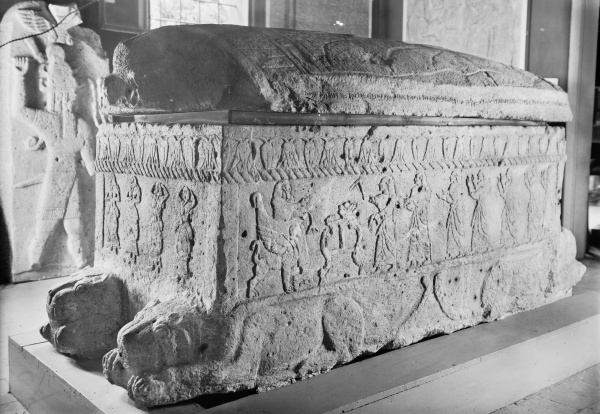Facts About Ahiram sarcophagus
The Ahiram sarcophagus is a remarkable discovery from 1923, unearthed by French archaeologist Pierre Montet in Byblos, Lebanon. This ancient relic is believed to belong to a Phoenician king named Ahiram, though he is not mentioned in other ancient texts. Some scholars speculate he might be connected to King Hiram of the Hebrew Bible.
What makes the Ahiram sarcophagus so exceptional are its intricate carvings and the inscription in the Phoenician language. This inscription is believed to be the oldest example of the fully developed Phoenician alphabet, marking a significant milestone in the alphabet's journey to Europe.
The sarcophagus was discovered after a landslide exposed several Phoenician royal tombs near Byblos. Ahiram's tomb was found about ten meters deep. The sarcophagus itself is adorned with detailed carvings that are a major artistic achievement from the Early Iron Age in Phoenicia. One scene depicts a king seated on a throne, flanked by winged sphinxes, while a priestess offers him a lotus flower. The lid features two male figures and seated lions, possibly representing the father and son mentioned in the inscription. The design shows influences from Assyrian art, but interestingly, no Egyptian artifacts from the 20th and 21st dynasties were found in Phoenicia.
Written in the Old Phoenician dialect, the inscription on the sarcophagus is one of the oldest examples of the Phoenician alphabet. It mentions Ahiram, son of Sibaal, king of Byblos, and includes a warning against disturbing the burial site. This inscription, considered quite literary, dates back to the 10th century BC. Although Ahiram is not explicitly called a king in the inscription, his son Ithobaal I is the first to be given the title King of Byblos. Some recent studies suggest that "Ithobaal" might have been a misreading, and researchers are continuing to explore the early king list of Byblos.

 Syria
Syria